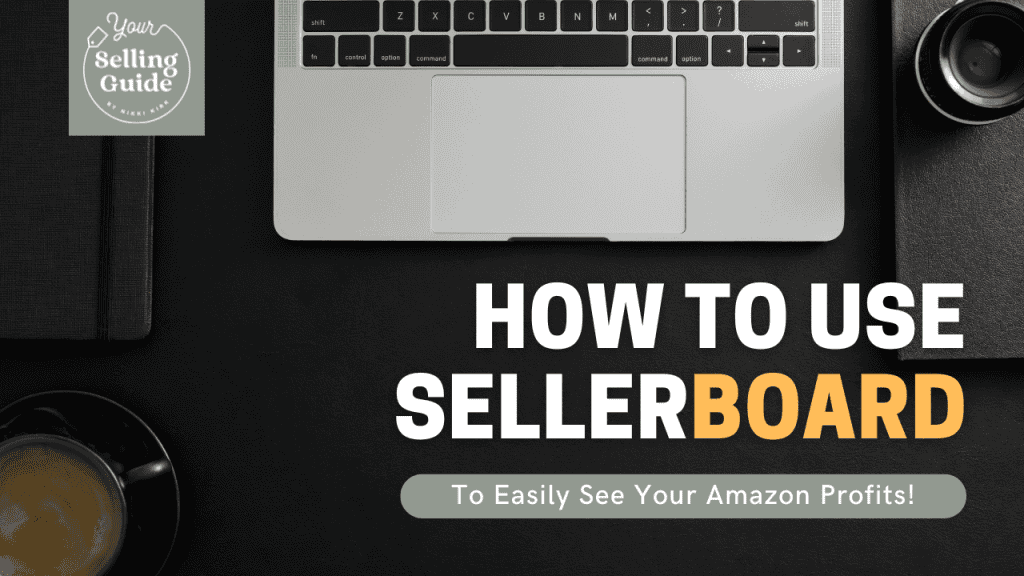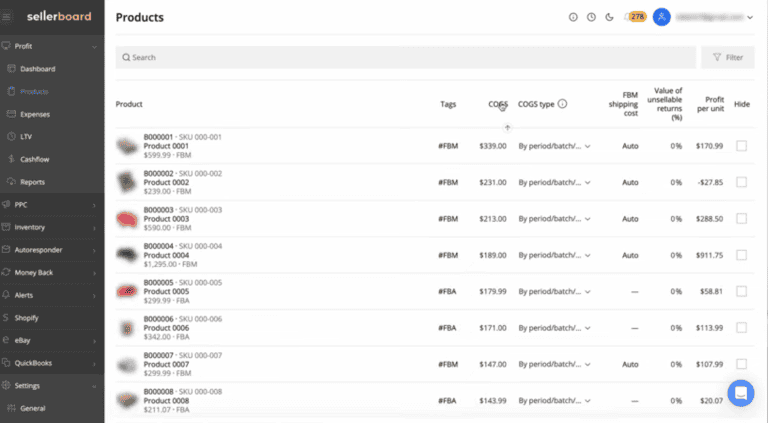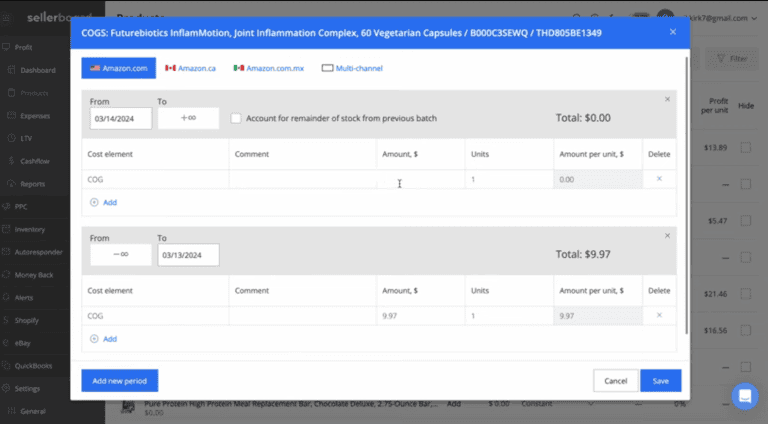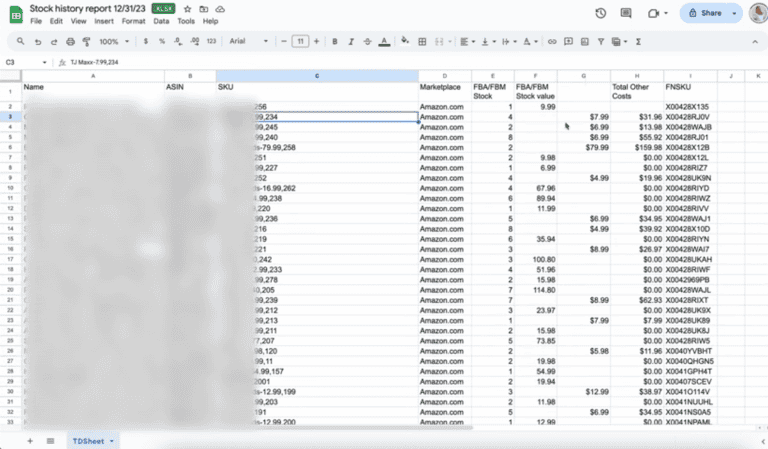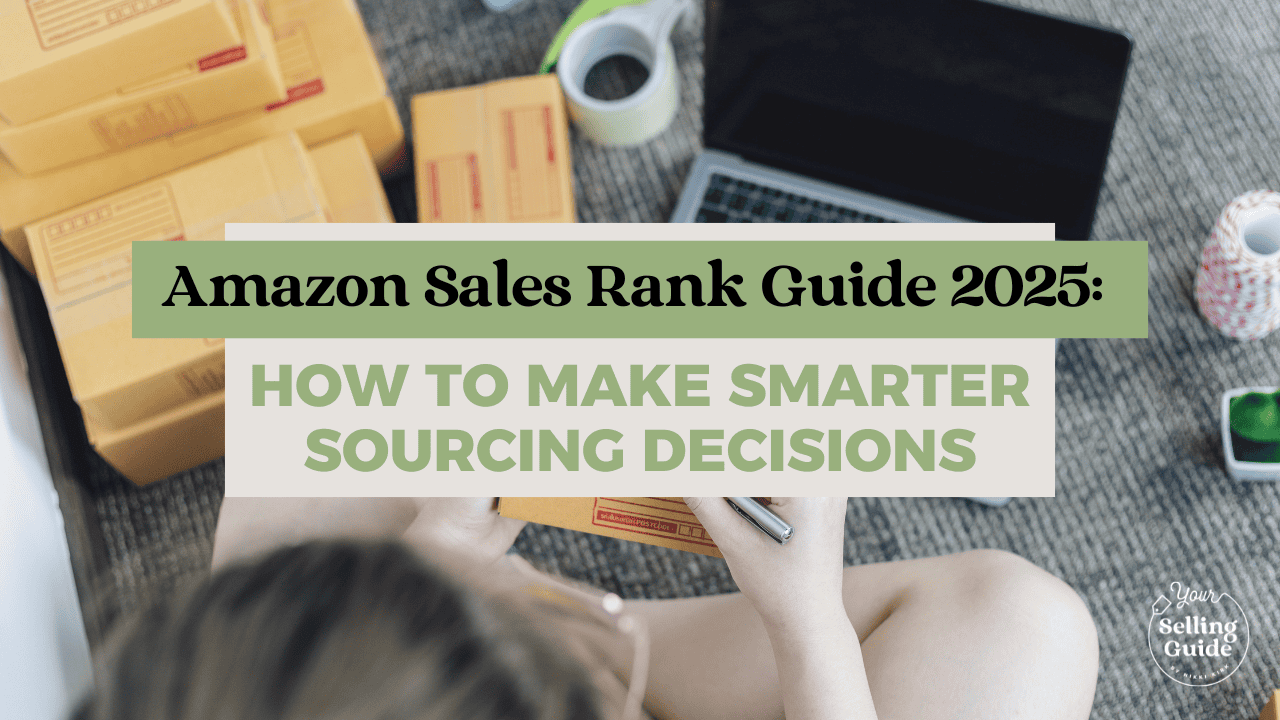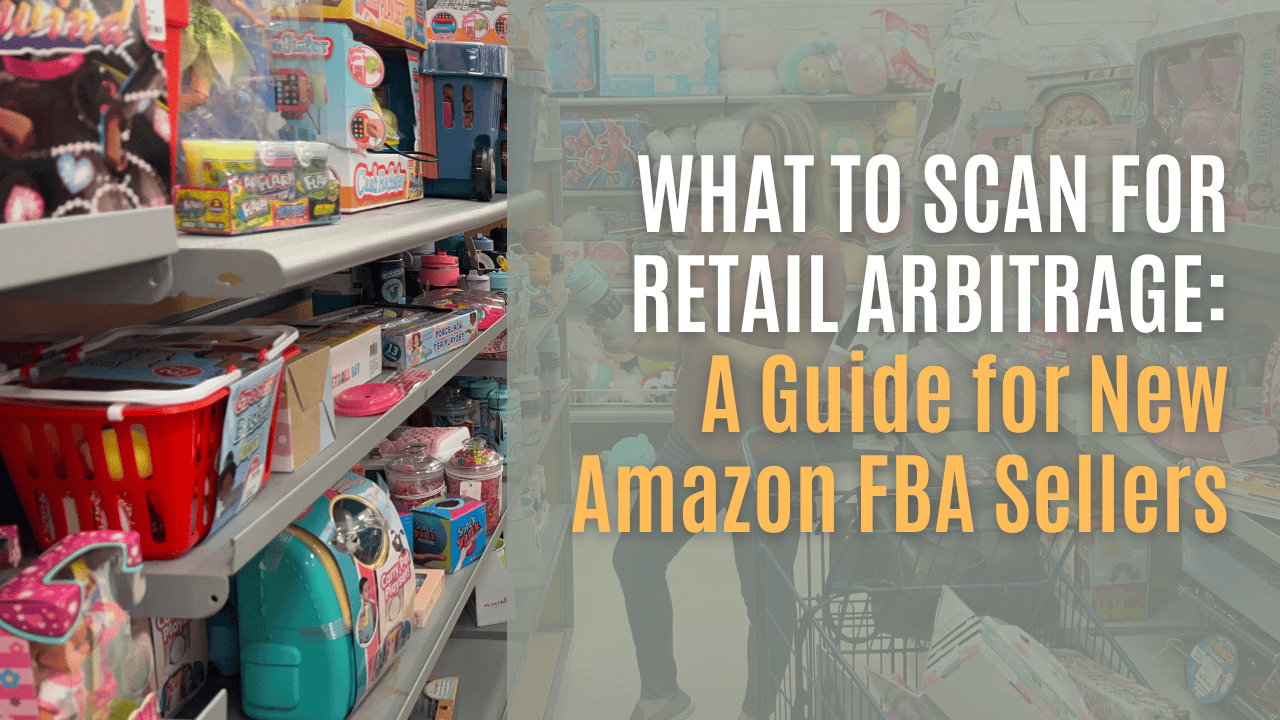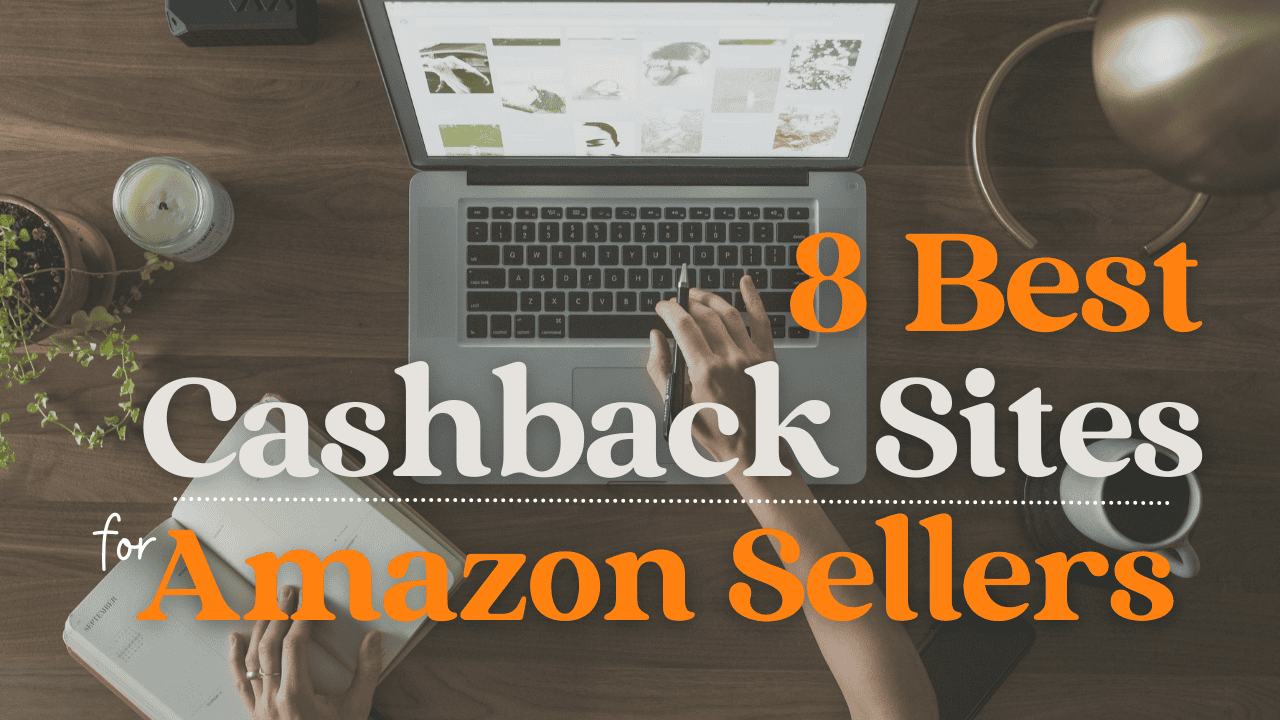Amazon sellers – if you want to streamline your business, you will love Sellerboard. This software has been a game-changer for managing my Amazon business. From tracking profit margins to managing inventory and even automating refunds, Sellerboard has taken a lot of the guesswork out of Amazon FBA and FBM.
In this Sellerboard review, I’ll explain why this software is essential to my Amazon business, walk you through its key features step-by-step, and discuss the Sellerboard price options.
This post includes affiliate links. If you try Sellerboard yourself, you’ll support my blog at no additional cost.
What is Sellerboard?
Sellerboard is a powerful software tool designed specifically for Amazon FBA sellers. The software offers a wide range of features to help manage and grow an Amazon business. At its core, Sellerboard provides in-depth profit analytics, inventory management, and expense tracking, but it doesn’t stop there.
With a steady stream of new developments this year, Sellerboard continues to expand its capabilities. This software is an invaluable resource for Amazon sellers looking to optimize their operations and maximize profitability.
Sellerboard Review: Essential For Managing Amazon FBA & FBM Business Profitability
Many Amazon sellers approach their business like a hobby and overlook the importance of tracking key profitability metrics. Without a clear view of profits, expenses, and other financial data, it’s easy to miss critical insights that can make or break an Amazon FBA or FBM business.
This is where Sellerboard truly shines—it makes understanding your Amazon business numbers straightforward and accessible. This tool helps sellers make informed decisions, such as whether to discontinue poor-performing products or when to restock.
Sellerboard’s profit-tracking features provide daily insights into Amazon business performance. Monitor your profits in real time, including detailed breakdowns of Amazon fees and forecasts for monthly sales.
Sellerboard App
The Sellerboard mobile app offers a quick snapshot of sales and profits in an easy-to-understand visual format, perfect for on-the-go decision-making. When I’m in-store, I can quickly check the Sellerboard app to see if it’s worth replenishing inventory while keeping a close eye on overall profitability.
Sellerboard vs. Inventory Lab
I use both Sellerboard and Inventory Lab because they serve unique purposes. While Inventory Lab is fantastic for managing and shipping inventory, Sellerboard excels at tracking and analyzing profit, return on investment (ROI), and the performance of Amazon products.
You can easily import data from Inventory Lab into Sellerboard, combining the strengths of both tools for comprehensive business insights.
To learn more, check out my detailed Inventory Lab guide.
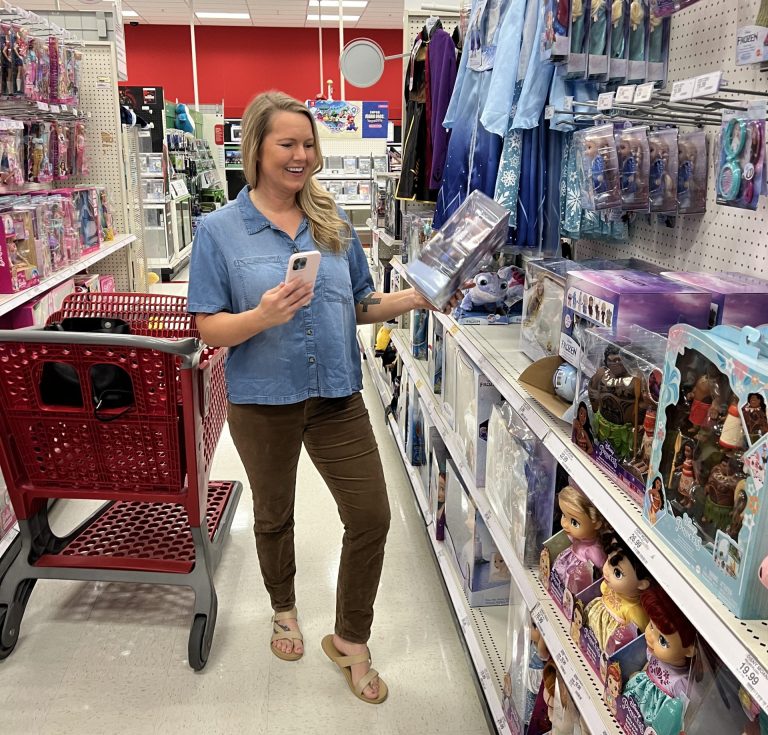
Sellerboard Price
The Sellerboard price is quite affordable. Currently, the standard subscription starts at just $15 per month.
The Sellerboard price is similar to other Amazon business software tools like Keepa. However, the profit you will make from its significant Amazon business insights makes the Sellerboard price well worth it.
Sellerboard’s setup is quick and easy. You can start with a free trial without needing a credit card. If you’re ready to dive in, you can enjoy two free months by signing up through my Sellerboard Free Trial link.
How to Use Sellerboard Features For Amazon Sellers
Sellerboard packed the software with features. I’m still discovering new ones! This tool can initially feel overwhelming, but once you get the hang of it, you’ll see how powerful Sellerboard can be for managing your Amazon FBA and FBM businesses.
Here are the top Amazon Sellerboard features I rely on to keep my business running smoothly and profitably.
How To Use the Sellerboard Dashboard
The Sellerboard Dashboard is the heart of the software and offers a customizable overview of your Amazon business. Amazon sellers can set up different sections to display profits, forecasts, and historical data. The result is a clear picture of Amazon business performance over time.
When Amazon sellers link their Amazon account to Sellerboard, it automatically pulls in all previous sales data to analyze past performance.
One Sellerboard feature I appreciate is the ability to filter data by various time periods. Quickly adjust the dashboard to view metrics from yesterday, last month, or even three months ago.
Analyze the Cost of Amazon Fees
One of Sellerboard dashboard’s most useful features is quickly showing total Amazon fees and refunds without the hassle of pulling complex reports directly from Amazon.
With just a few clicks, view a detailed breakdown of fees for specific time periods, like monthly or year-to-date. This feature makes it easy to track expenses and see how much Amazon takes in fees. This information is crucial for managing costs and ensuring profitability.
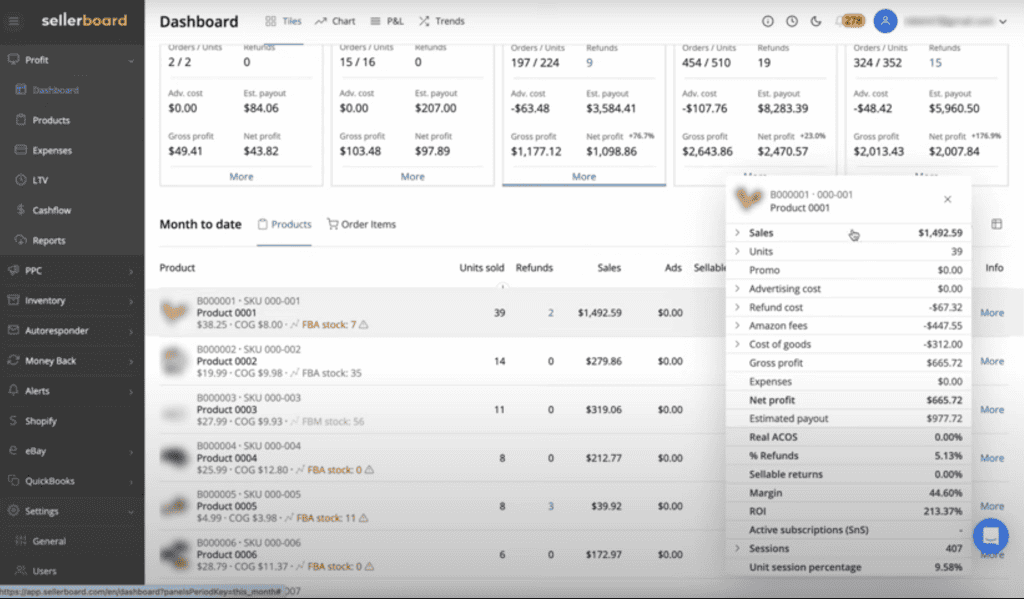
View ROI Data by Amazon FBA or FBM Product
Sellerboard’s real-time data makes it easy to assess the performance of individual products. Use this information to decide which items are worth restocking.
View detailed sales data by product, including margin, ROI, and profit. With this insight, quickly identify which products drive profitability and which need reconsidering. Make smarter inventory decisions and maximize returns.
Manage Amazon FBA & FBM Cost of Goods
Accurately input the cost of goods in Sellerboard for precise profit calculations.
Sellerboard Dashboard Layouts
Chart View
In the Chart View, customize the date range for insights into key metrics like units sold, advertising costs, net profit, and refunds. This visual tool is perfect for those who prefer to track trends over time.
For instance, I used to run ads for some bundles, but after I stopped, the profit difference in the graph was clear. This chart analyzes performance based on historical data.
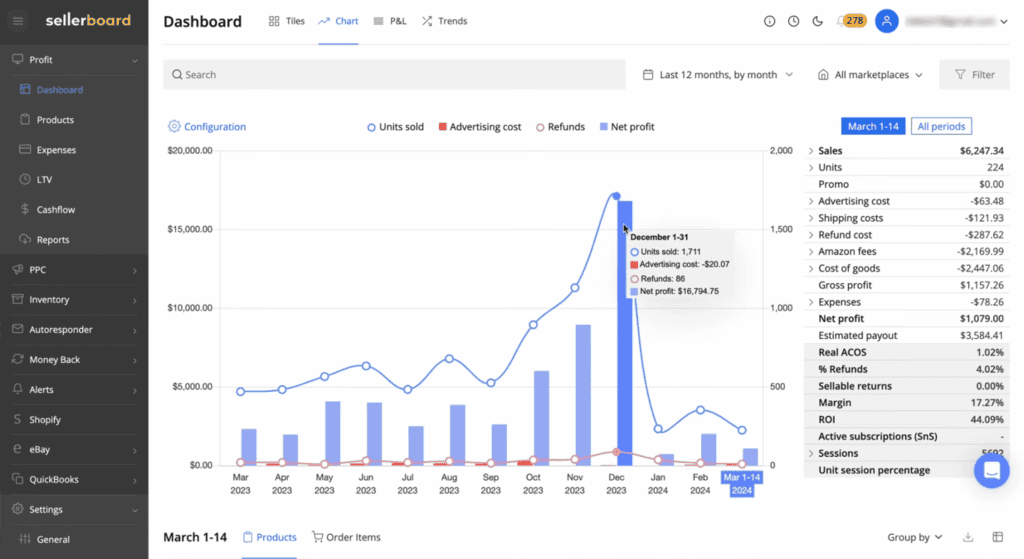
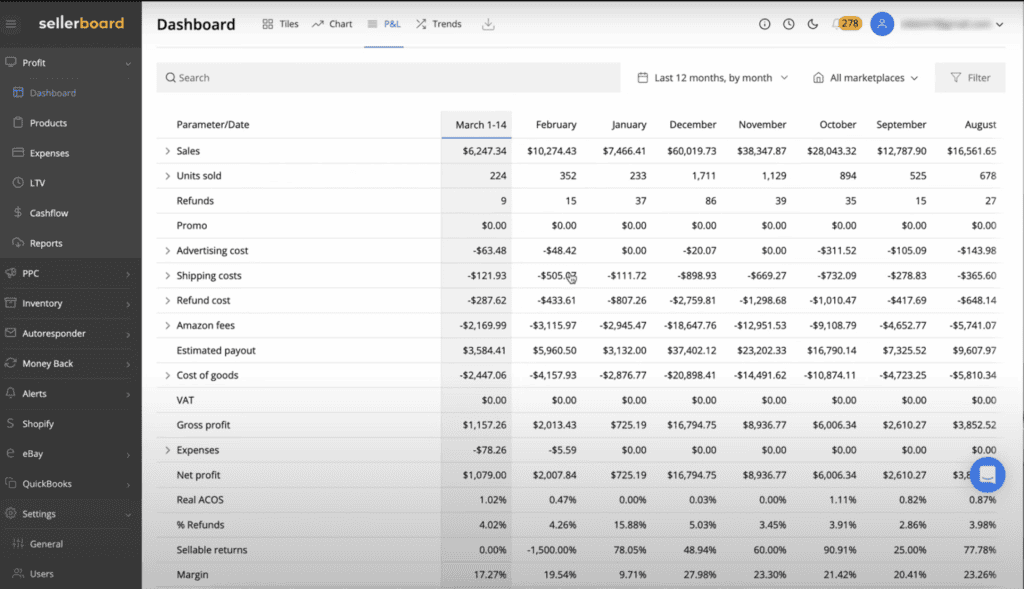
Profit & Loss View
The Profit & Loss View in Sellerboard provides a comprehensive overview of an Amazon business’s month-by-month financial performance. The detailed breakdown of sales, fees, and profits makes it easy to assess financial health at a glance.
Filtering by various time periods tailors analysis to your needs. Additionally, view specific fees, including Amazon fees, and expand or collapse categories to get a clearer picture of sales and expenses.
Product Trends
The Amazon product trends tool monitors how specific products perform over time. It tracks various metrics, including profit, refunds, and other key indicators.
With detailed insights into product performance, quickly identify which Amazon products are selling well and which may be causing issues, such as too many refunds.
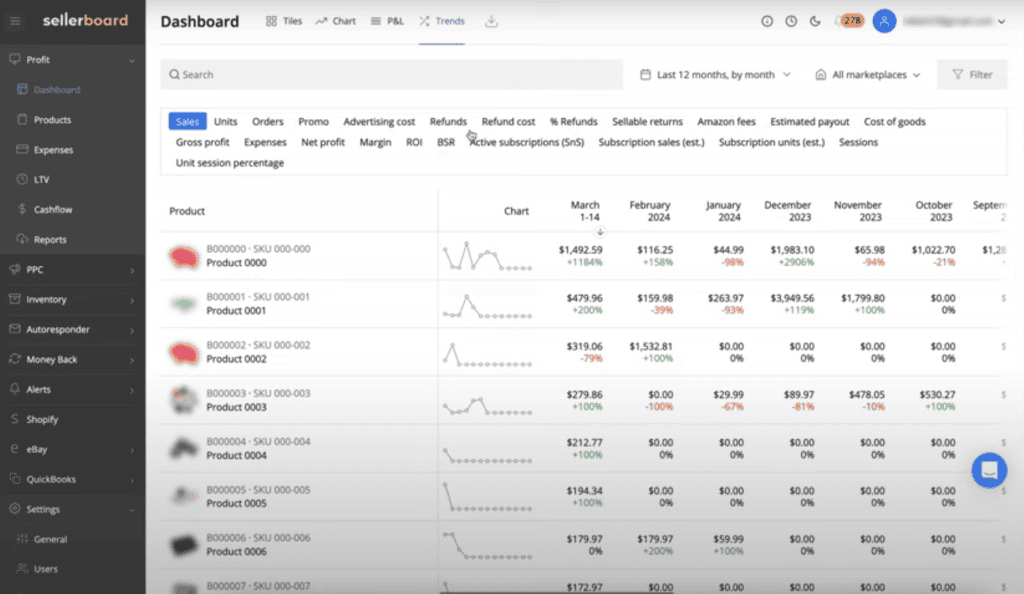
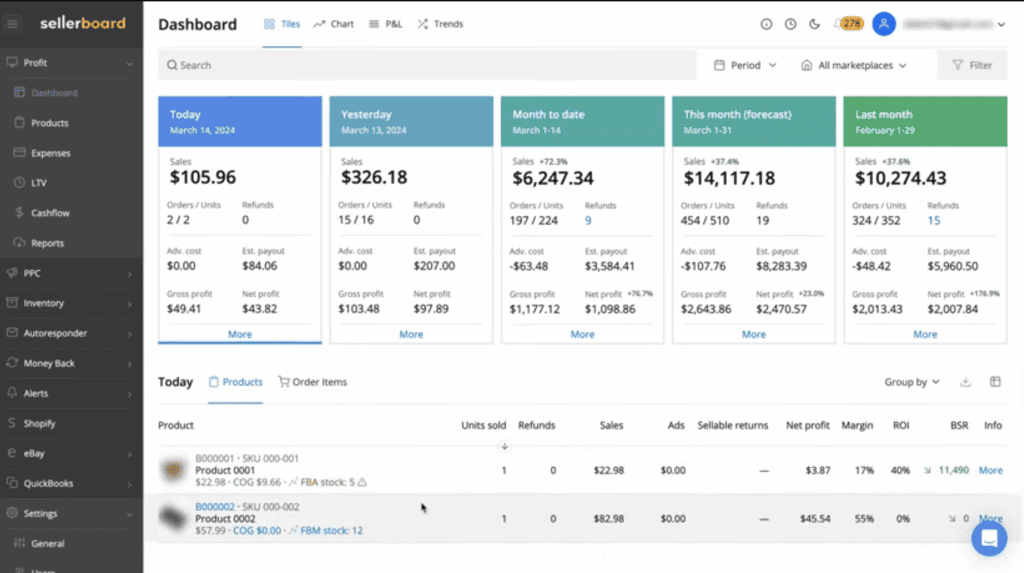
Adding Columns in the Sellerboard Dashboard
Customize the Sellerboard dashboard further by adding columns for important metrics such as Amazon fees, refund percentages, or promotional costs. The filter feature also easily narrows down the results to search for specific products by brand or item.
I love using this capability to prepare for reorders. I can pull up detailed sales data for any product within a custom date range.
How to Enter Cost of Goods (COG) on Sellerboard
Go to Products Tab to enter the Cost of Goods.
Option 1: Enter the Cost of Goods Manually
You can manually enter the cost of your goods in two ways. For older products you no longer want to track, simply hide them from view. When manually entering the COG, you can assign different prices for various periods.
For example, if the price you paid for a product increased over time, input the old price for past sales and the new price for current ones for a more accurate view of profits.
Option 2: Upload Cost of Goods in Sellerboard
Alternatively, use a template to upload the COG in a batch. Amazon sellers who use tools like Inventory Lab for managing shipments and COG data can easily export information and employ a VLOOKUP formula to integrate the COG into Sellerboard.
To do this, navigate to Products > Import > Products Data.
By matching the ASIN or SKU in a spreadsheet with the data pulled from Inventory Lab, you can update the COG for multiple products simultaneously.
When you’re ready to upload the file back into Sellerboard, only include the necessary columns, such as ASIN, SKU, and COG.
If a product doesn’t have a COG, filter the sheet to show only blanks. Then, use VLOOKUP to fill in the missing data. After completing the necessary fields, copy and paste the results into the spreadsheet and upload the updated file to Sellerboard.
For more detailed guidance on using VLOOKUP, this how-to article can help further.
How to Log Expenses in SellerBoard
Go to the Expenses tab to log expenses in Sellerboard
The Expenses tab keeps track of all Amazon business expenses.
For example, I pay for most of my software annually, including Tactical Arbitrage, BeCool, Inventory Lab, and Keepa. Sellerboard allows you to amortize costs to avoid a significant hit to daily profit reports.
Example: If you pay for an annual software subscription that costs $500, instead of deducting the full amount from your profit in one day, Sellerboard will spread that cost across 365 days to achieve a more accurate daily profit.
Read this article to better understand amortization.
Be sure to categorize expenses (e.g., software, supplies) to simplify expense management and to provide a clearer picture of true profit when combined with other business costs.
Sellerboard PPC Tracking
Sellerboard offers PPC tracking to help Amazon sellers identify the best keywords, monitor their performance, and make informed recommendations. While I don’t use it personally, it’s valuable for those looking to optimize their advertising strategies.
With this PPC tool, Amazon sellers can gain insights into which keywords drive sales and adjust their campaigns accordingly, improving return on investment.
How to Use the Sellerboard Inventory Planner
For businesses with more complex inventory needs—like using a prep center or managing wholesale accounts—Sellerboard’s Inventory Planner is an invaluable tool.
The Inventory Planner tracks sales velocity, stock on hand, and the number of days of stock left. This data informs when to restock your inventory. The feature also monitors Purchase Orders to better manage supplier inventory.
While I don’t yet use a prep center or large-scale wholesale models, Sellerboard’s inventory planning tools would help me scale those operations.
The platform also includes FBA Shipment Tracking. This feature pulls in shipment data and visually monitors where each shipment stands in the fulfillment process. If there’s a discrepancy, such as missing units, Sellerboard flags for investigation through Amazon Seller Central.
Sellerboard Autoresponders for Amazon Product Page Reviews
Autoresponders set up automatic emails that send Amazon’s standard review request to customers after a purchase. Sellerboard autoresponders are managed through the Campaigns tab.
This feature drives reviews for my bundles’ Amazon product pages. It’s a simple yet effective way to encourage customer feedback, significantly boosting sales without heavy reliance on advertising.
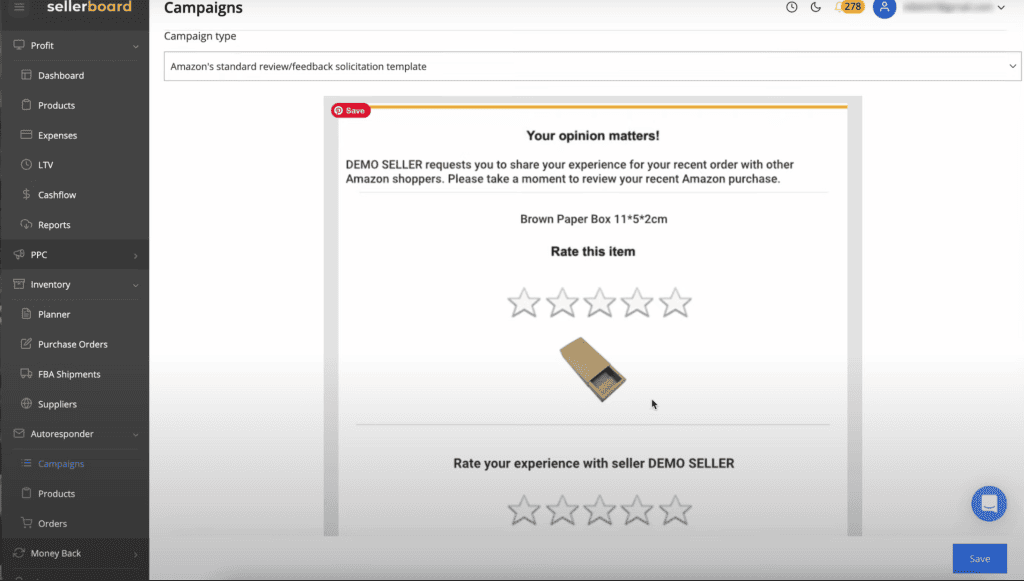
SellerBoard Sales Reports
Sellerboard makes it easy to generate Sales Reports for different periods, including monthly, daily, or annually. For Amazon sellers that use the accrual bookkeeping method and need to track inventory for tax purposes, these reports simplify the process by displaying the stock value on hand.
Sellerboard’s reporting system is far less clunky than Amazon’s, providing a more user-friendly experience for quick overviews of inventory or sales by product.
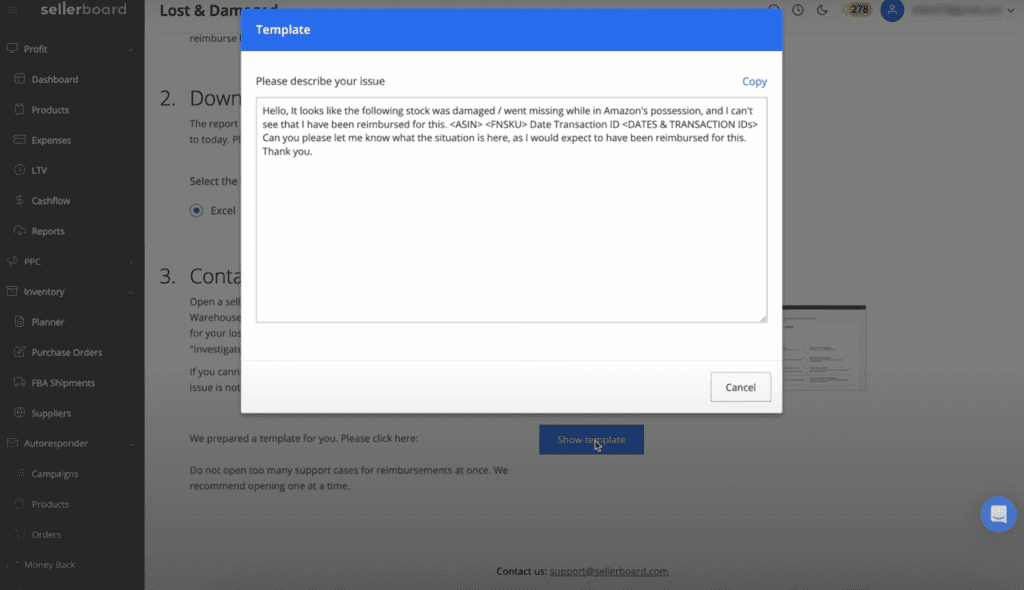
Get Money Back From Amazon With Sellerboard
When sellers need to recover lost money from Amazon due to damaged stock or unreturned customer returns, Sellerboard simplifies the process.
Download ready-made reports and templates to submit reimbursement claims directly to Amazon.
For instance, Sellerboard might indicate that you’re owed $740 for lost or damaged stock. With their template, you can easily submit a claim to Amazon.
Additionally, Sellerboard tracks fees on FBA shipments. If Amazon remeasures a product or changes the fee calculation, Sellerboard will notify you. This enables you to submit a claim.
Alerts for Amazon Product Listing Changes
Sellerboard constantly tracks Amazon products and provides alerts for any significant changes, such as losing the parent ASIN, product branding changes, or FBA fees. Customize these alerts to stay aware of important updates and quickly act if something seems off.
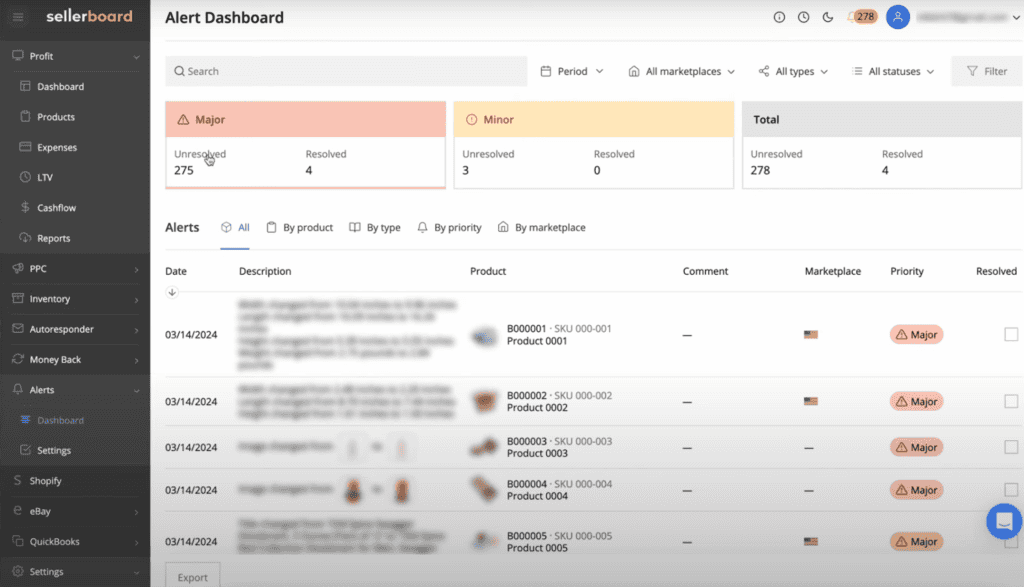
Sellerboard Free Trial for Amazon Sellers
I absolutely love Sellerboard, and I know you will, too! If you’re ready to elevate your FBA or FBM business with powerful features and insights, don’t wait—try Sellerboard! Sign up through my link and get your first two months completely FREE!
Video: Sellerboard Tutorial
If you’re a visual learner, you’re in luck! Watch the video version of this Sellerboard tutorial to see how I use these Sellerboard features step by step.
